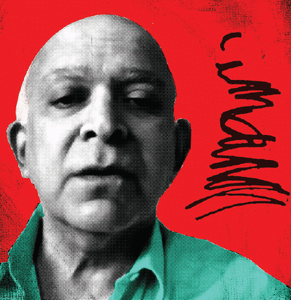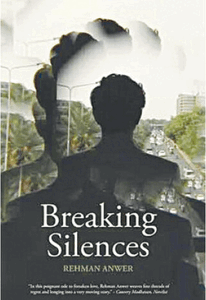
The Antiquities of Banbhore: An Early Islamic Port City in Southern Sindh
By Dr Muhammad Rafique Mughal
Endowment Fund Trust
ISBN-978969-9860-48-5
456pp.
The Antiquities of Banbhore: An Early Islamic Port City in Southern Sindh has materialised through the pen of Dr Muhammad Rafique Mughal, a renowned archaeologist of Pakistan and an internationally acknowledged scholar in the field, who has, in a simple yet convincing manner, merged hard-core archaeological data with events in the historic panorama of Sindh.
His book, a voluminous coffee table edition, is a gold mine, containing an inexhaustible reservoir of material and information for research in the field of archaeology and culture.
The book is structured in various parts, initially highlighting the brief history of the excavations and the areas excavated and exposed, followed by the chronological sequence established from the antiquities, dated inscriptions, calligraphy, objects and sculptures associated with well-known periods of history and stratigraphy revealed during the excavations.
The structural remains exposed during the excavations and the contextual artifactual evidence compliment one’s understanding of the ancient city of Banbhore. Given at the end of the book is the accession register of the antiquities, comprising nearly 8,000 antiquities, which is of utmost importance.
A coffee table book on the city of Banbhore is priceless material for archaeologists and researchers but also contains a wealth of information for casual readers interested in history
The author at the outset, emphatically, reiterates the earlier theory that Banbhore, in fact, was erected in the same place as Debal, a legendary city in Sindhi folklore. According to him, the finding of Banbhore represents a “significant change in the Islamic political, cultural, and even commercial life of the people of Sindh.” He notes that Banbhore was an important and the only port-city in Sindh until at least the 13th century CE, connecting Sindh to the Islamic World on the one hand and the Far East on the other.

He further reveals that the city of Banbhore does not show any “evidence of destruction that required replacement of the entire population with new inhabitants except in the beginning of the 8th century CE, when the city was invaded and almost rebuilt, as demonstrated by the construction of a strong defense wall and restricted access through at least three gateways.”
He emphasises that the chronology of Banbhore has been strengthened by the discovery of several dated coins that were found in good condition. These coins, according to him, belong to Arab-Sassanian and Arab-Byzantine periods, date from the 5th to the 7th centuries CE. This fact, according to the author, is further strengthened by the discovery of some coins showing Zoroastrian fire on the obverse and the word “Bismillah” or “Allah” on the reverse.
According to him, such coins remained in circulation until the Arabs minted new coins in the conquered territories of Sindh and Hind. The presence of coins in various stratigraphic levels of the excavated areas confirm the exact dating of the site, which would go a long way in understanding the cultural-chronological sequence of the site with other sites within the region and the contemporary Islamic world.
Dr Mughal confirms that a number of inscriptions in Arabic language were discovered close to the Grand Mosque of Banbhore and one such inscription is dated 109 AH/ 727-8 AD. He discloses that some undated inscriptions or those with worn-out dates have been found to have carvings showing a human face or a flower motif. The face of such carvings, he states, was “found to be turned inside the wall as if to conceal the carving from public view.”
These carvings, he believes, perhaps belonged to a temple that was destroyed by the Arabs after the conquest of the city, and the material was reused in the construction of a mosque. He also reveals that a large number of potsherds bearing Arabic inscriptions in floriated Kufic-style have also been discovered.

One does not find much discussion about the ceramics discovered from Banbhore. Nevertheless, the author maintains that a large number of plain, painted, glazed and graffito-glazed wares have been unearthed from various levels of the site, besides the ceramics of the Sytho-Parthian, Sassanian and Buddhist-Brahmanical periods.
On the basis of sound and overwhelming evidence, he postulates there are five periods of settlement in the history of Banbhore, beginning from the 1st century BCE to the 12th century CE.
The chapter on the structural remains exposed during the eight seasons of excavations in various areas of Banbhore reveals that major activity occurred during the Islamic period from the 8th century CE onwards, declining around the 13th century CE. The upper ‘Islamic’ levels exposed the city plan of Banbhore. Towards the end of the city, a decline was evident from the structural remains as well. The later Islamic period structures were built on earlier occupations of pre-Islamic times.
A quick glance at the contents of the book also reveals that this publication is not only a huge source material for archaeologists and researchers; it also contains a wealth of information for casual readers interested in history. For the benefit of researchers, Dr Mughal has painstakingly included the long-forgotten (though already published) reports written by Dr Fazal Ahmad Khan, the former Director General of the Department of Archaeology, Government of Pakistan, and the renowned scholar Dr Nabi Bux Balouch. The findings of these two eminent scholars clearly establish the fact that Banbhore is located at the same site as the legendary Debal port, thus trying to stamp out any further controversy on this subject. The author, too, shares the opinion with conviction, as explained earlier.
The worth of this publication is priceless for archaeologists. It would have been a colossal loss if the excavated material from Banbhore had perished due to official apathy and bureaucratic lethargy and indifference. Despite the long delay, this publication can be described as the first comprehensive reference and source material on Banbhore, filling a longstanding gap in archaeological scholarship and studies of the Indus Delta region.
The Endowment Fund Trust has done an extremely laudable job in publishing this book. The quality of printing, including pictures of the cultural repertoire and structural evidence, is excellent. The cover design is also very attractive. All these features complement each other in making this work a valuable new addition to scarce coffee table publications on antiquities.
The reviewer is a professor of archaeology and a former vice chancellor of Shah Abdul Latif University in Khairpur
Published in Dawn, Books & Authors, September 22nd, 2024


































